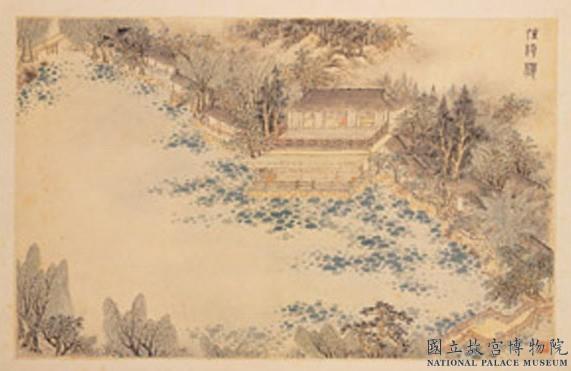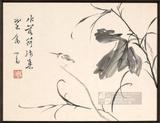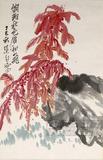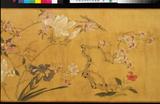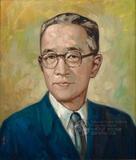明沈士充畫郊園十二景 冊 晴綺樓
推薦分享
資源連結
連結到原始資料 (您即將開啟新視窗離開本站)後設資料
- 資料識別:
- 故畫001145N000000007
- 資料類型:
- 類型:繪畫
- 型式:靜態圖像
- 著作者:
- 沈士充
- 主題與關鍵字:
- 臺閣 池水 迴廊 蓮荷 橋 欄杆 芭蕉 楊柳 松 傢俱(屏風) 高士(士人、隱士) 侍從(侍女、童僕) 夏景
- 出版者:
- 數位化執行單位:國立故宮博物院
- 日期:
- 明熹宗天啟五年(1625)
- 格式:
- 本幅 30.1x47.5公分、全幅 70x53公分
- 關聯:
- 石渠寶笈三編(延春閣),第四冊,頁2022&*故宮書畫錄(卷六),第四冊,頁62&*故宮書畫圖錄,第二十三冊,頁164-167&*沈士充,字子居,華亭人,活動於萬曆崇禎年間(一五七三-一六四四)。為宋懋晉弟子,並兼師趙左。所作山水,丘壑蒨葱,筆墨厚潤,為晚期雲間派大將。嘗為董其昌代筆,部分贗董畫即出於其手。晴綺樓乃沈士充為王煙客作郊園十二景中之一開,園中遍植柳樹芭蕉,曲橋迴廊,花樹掩映。幅中樓作二層,下層平台涼棚下,二人憑欄觀荷,荷香陣陣。此幅造景親切可愛,清新雅緻,自成一格,雋永處讓人回味無窮。本幅選自郊園十二景一冊。&*The Ch’ing-ch’i Tower Shen Shih-ch’ung (fl. 1573-1644) Ming Dynasty Shen Shih-ch’ung (style name Tzu-chü) was a native of Hua-t’ing. A disciple of Sung mou-chin, Shen was also a student of the painter Chao Tso (fl. 1603-1629). In Shen’s landscape paintings, the hills and valleys are filled with luxuriant growth and depicted with very dense brushwork. He later became a leading painter of the Yün-chien School. He also was a sometime ghost-painter for Tung Ch’i-ch’ang (1555-1636). This painting of the Ch’ing-ch’i Tower is one work from a twelve-leaf album of suburban gardens done for Wang Yen-K’o. This garden is filled with willow trees with banana plants, a winding bridge and covered corridors, and flowers and trees mingling in the shade. The tower in this painting has two stories, the lower of which includes a covered balcony. In the coolness of the balcony, two people lean and gaze at lotus blossoms, the fragrance of which wafts upward. The scene described in this painting is intimate and close with a fresh and elegant style of its own lingers in the mind of the viewer.&*1.何傳馨,〈明沈士充晴綺樓〉,收入何傳馨、許郭璜編,《夏景山水畫特展圖錄》(臺北:國立故宮博物院,1991年七月初版),頁105。
- 管理權:
- 國立故宮博物院
授權聯絡窗口
- 國立故宮博物院圖像授權、出版授權、影音資料授權-申請流程說明
http://www.npm.gov.tw/zh-TW/Article.aspx?sNo=03003061
